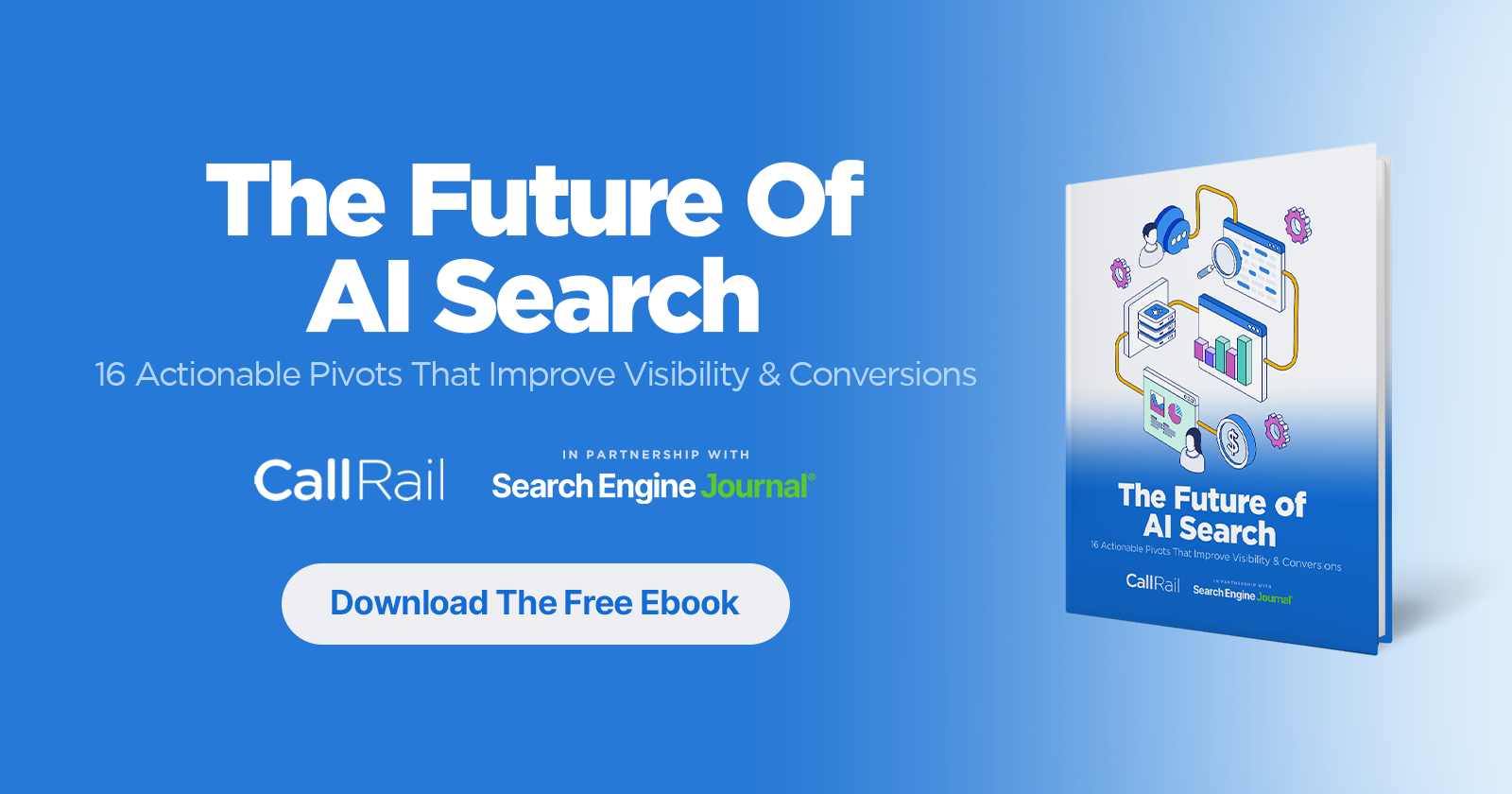Search is changing, and not just because of Google updates.
Buyers are changing how they find, evaluate, and decide. They are researching in AI summaries, asking questions out loud to their phones, and converting through conversations that happen outside of what most analytics can track.
Our latest ebook, “The Future Of Search: 16 Actionable Pivots That Improve Visibility & Conversions,” explores how marketers are responding to this shift.
It offers a closer look at what it means to optimize for visibility, engagement, and results in a fragmented, AI-influenced search landscape.
Here are five key takeaways.
1. Ranking Well Doesn’t Guarantee Visibility
Getting to the top of search results used to be enough. Today, that’s no longer the case.
AI summaries, voice assistants, and platform-native answers often intercept the buyer before they reach your website.
Even high-ranking content can go unseen if it’s not structured in a way that’s easily digestible by large language models.
For example, research shows AI-generated summaries often prioritize single-sentence answers and structured formats like tables and lists.
Only a small fraction of AI citations rely on exact-match keywords, reinforcing that clarity and context are now more important than repetition.
To stay visible, businesses need to consider how their content is interpreted across multiple AI systems, not just traditional SERPs.
2. Many Conversions Happen Offscreen
Clicks and page views only tell part of the story.
High-intent actions like phone calls, text messages, and offline conversations are often left out of attribution models, yet they play a critical role in decision-making.
These touchpoints are especially common in service-based industries and B2B scenarios where buyers want real interaction.
One case study reveals that a company discovered nearly 90% of their Yelp conversions came through phone calls they weren’t tracking. Another saw appointment bookings spike after attributing organic search traffic to calls rather than clicks.
Our ebook refers to this as the insight gap, and highlights how conversation tracking helps marketers close it.
3. Listening Is More Effective Than Guessing
Marketers have access to more customer input than ever, but much of it goes unused.
Call transcripts, support calls, and chat logs contain the language buyers actually use.
Teams that analyze these conversations are gaining an edge, using real voice-of-customer insights to refine messaging, improve landing pages, and inform campaign strategy.
In one example, a marketing agency increased qualified leads by 67% simply by identifying the specific terminology customers used when asking about their services.
The shift from assumptions to evidence is helping brands prioritize what matters most, and it’s making their campaigns more effective.
4. Paid Search Works Better When It Aligns With Everything Else
Search behavior is not linear, and neither is the buyer journey.
Users often move between organic results, paid ads, and AI-generated suggestions in the same session. The strongest-performing campaigns tend to be the ones that echo the same language and value props across all these touchpoints.
That includes aligning ad copy with real customer concerns, drawing from call transcripts, and building landing pages that reflect the buyer’s stage in the decision process.
It also means rethinking what happens after the click.
5. Attribution Models Are Out Of Step With Reality
Most attribution still assumes that conversions happen on a single screen. That’s rarely true.
A manager might discover your brand in an AI-generated search snippet on a desktop, send the link to themselves in Slack, and later call your sales team from their iPhone after revisiting the content on mobile.
Marketers relying only on last-click attribution may be optimizing based on incomplete or misleading data.
The report makes the case for models that include multi-touch, cross-device, and offline activity to give a fuller picture of what drives conversions.
This isn’t about tracking more for the sake of it. It’s about making smarter decisions with the signals that matter.
Rethinking Search Starts With Rethinking Buyers
The ebook, written in collaboration with CallRail, offers more than strategy updates. It is a reminder that behind every metric is a person making a decision.
Marketers who succeed in this new environment aren’t just optimizing for rankings or clicks. They are optimizing for how people think, search, and take action.
Download the full report to explore how buyer behavior is reshaping search strategy.

Featured Image: innni/Shutterstock
